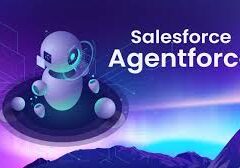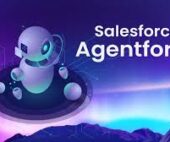What Makes a True AI Agent? Rethinking the Pursuit of Autonomy
Unpacking the Core Traits of AI Agents — And Why Foundations Matter More Than Buzzwords
The tech industry is enamored with AI agents. From sales bots to autonomous systems, companies like Salesforce and HubSpot claim to offer groundbreaking AI agents. Yet, I’ve yet to encounter a truly autonomous, agentic experience built from LLMs. The market is awash with what I call “botshit,” and if the best Salesforce can do is improve slightly over a mediocre chatbot, that’s underwhelming. What Makes a True AI Agent?
But here’s the critical question everyone is missing: even if we could build fully autonomous AI agents, how often would they be the best solution for users?
To explore this, let’s consider travel planning through the lens of agents and assistants. This use case helps clarify what each trait of agentic behavior brings to the table and offers a framework for evaluating AI products beyond the hype. By the end of this piece, you’ll be able to decide whether AI autonomy is a worthwhile investment or a costly distraction.
The Spectrum of Agentic Behavior: A Practical Framework
There’s no consensus on what truly defines an AI “agent.” Instead of relying on a binary classification, I suggest adopting a spectrum framework with six key attributes from AI research. This approach is more useful in today’s landscape because:
- It captures the nuanced capabilities of different systems.
- It helps set realistic expectations.
- It aligns with the incremental nature of AI development in real-world applications.
Using the example of a travel “agent,” we’ll explore how different implementations fall on this spectrum. Most real-world applications land somewhere between “basic” and “advanced” tiers across the six traits. This framework will help you make informed decisions about AI integration and communicate more effectively with both technical teams and end users.
By the end, you’ll be equipped to:
- Spot the hype when companies claim to have built an “AI agent.”
- Focus on what truly matters when developing AI systems.
- Steer your organization’s AI strategy without falling into buzzword traps.
What Makes a True AI Agent
The Building Blocks of Agentic Behavior
1. Perception
The ability to sense and interpret its environment or relevant data streams.
- Basic: Understands simple text inputs like travel preferences and accesses basic travel databases.
- Advanced: Analyzes multiple data streams, including past travel history, real-time flight data, weather, and even social media trends.
An agent with advanced perception could, for instance, notice your preference for destinations with excellent public transit and factor that into future recommendations.
2. Interactivity
The ability to engage with its environment, users, and external systems.
- Basic: Answers user queries in a Q&A format.
- Advanced: Maintains a dynamic conversation, asks for clarifications, and adjusts its communication style based on user preferences.
LLMs like ChatGPT have set a high bar for interactivity. However, most customer support bots struggle because they need to integrate company-specific data and backend systems, prioritizing accuracy over creativity.
3. Persistence
The ability to store, maintain, and update long-term memories about users and interactions.
- Basic: Saves simple preferences for future use.
- Advanced: Builds a detailed profile of user habits and continually refines its understanding.
True persistence requires systems that not only store data but also evolve with each interaction, much like how a human travel agent remembers your favorite seat on a plane.
4. Reactivity
The ability to respond to changes in its environment in real time.
- Basic: Adjusts estimates based on manual inputs, like new exchange rates.
- Advanced: Monitors multiple data streams and proactively adjusts itineraries based on real-time events.
For example, a reactive system could suggest alternative travel dates if hotel prices surge due to a local event.
5. Proactivity
The ability to anticipate needs and offer relevant suggestions unprompted.
- Basic: Recommends popular tourist attractions.
- Advanced: Flags important issues like an upcoming passport expiration or suggests better travel times based on traffic patterns.
True proactivity requires robust perception, persistence, and reactivity to offer timely, context-aware suggestions.
6. Autonomy
The ability to operate independently and make decisions within defined parameters.
Autonomy varies by the level of resource control, impact scope, and operational boundaries. For example:
- Basic: Limited control over low-value tasks, like managing irrigation systems.
- Advanced: Managing high-value resources, like optimizing a company’s entire AI infrastructure.
The more complex the task and the greater the impact of a mistake, the more safeguards and precision the system needs.
Proactive Autonomy: A Future Frontier
The next step is proactive autonomy — the ability to modify goals or parameters to achieve overarching objectives. While theoretically possible, this introduces new risks and complexities, bringing us closer to the scenarios seen in sci-fi, where AI systems operate beyond human control. Most companies are nowhere near this level, and prioritizing foundation work like perception and persistence is far more practical for today’s needs.
Agents vs. Assistants: A Useful Distinction
An AI agent demonstrates at least five of the six attributes and exhibits autonomy within its domain. An AI assistant excels in perception, interactivity, and persistence but lacks autonomy or proactivity. It primarily responds to human requests and relies on human oversight for decisions.
While many AI systems today are labeled “agents,” most function more like assistants. A Roomba, for example, is closer to an agent, autonomously navigating and adapting within a predefined space. On the other hand, tools like GitHub Copilot serve as powerful assistants, enhancing user capabilities without making independent decisions.
Foundations Before Flash: The Role of Data
Despite all the AI buzz, few companies today have the data foundations to support meaningful agentic behavior. For instance, most customer interactions rely on nuanced, unwritten information that is hard to automate. Missing perception foundations and inadequate testing lead to the “botshit” plaguing the industry.
The key is to focus on building strong foundations in perception, interactivity, and persistence before tackling full autonomy.
Start with the Problem: Why User-Centric AI Wins
Before chasing the dream of autonomous agents, companies should start by asking what users actually need. Many organizations would benefit more from developing reliable assistants rather than fully autonomous systems. Real user problems, like those solved by Waymo and Roomba, offer clear paths to valuable AI solutions.
The Path Forward: Align Data, Systems, and User Needs
When deciding where to invest in AI:
- Define the specific user problem.
- Identify the key traits (e.g., perception, interactivity) needed to deliver value.
- Assess your data readiness.
- Realistically evaluate the resources required to bridge the gap between current capabilities and desired outcomes.
By focusing on foundational pillars, companies can build AI systems that solve immediate problems, laying the groundwork for more advanced capabilities in the future. Whether you’re developing agents, assistants, or indispensable tools, aligning solutions with real user needs is the key to meaningful progress.
Contact Tectonic for assistance answering the question What Makes a True AI Agent work for my business?













